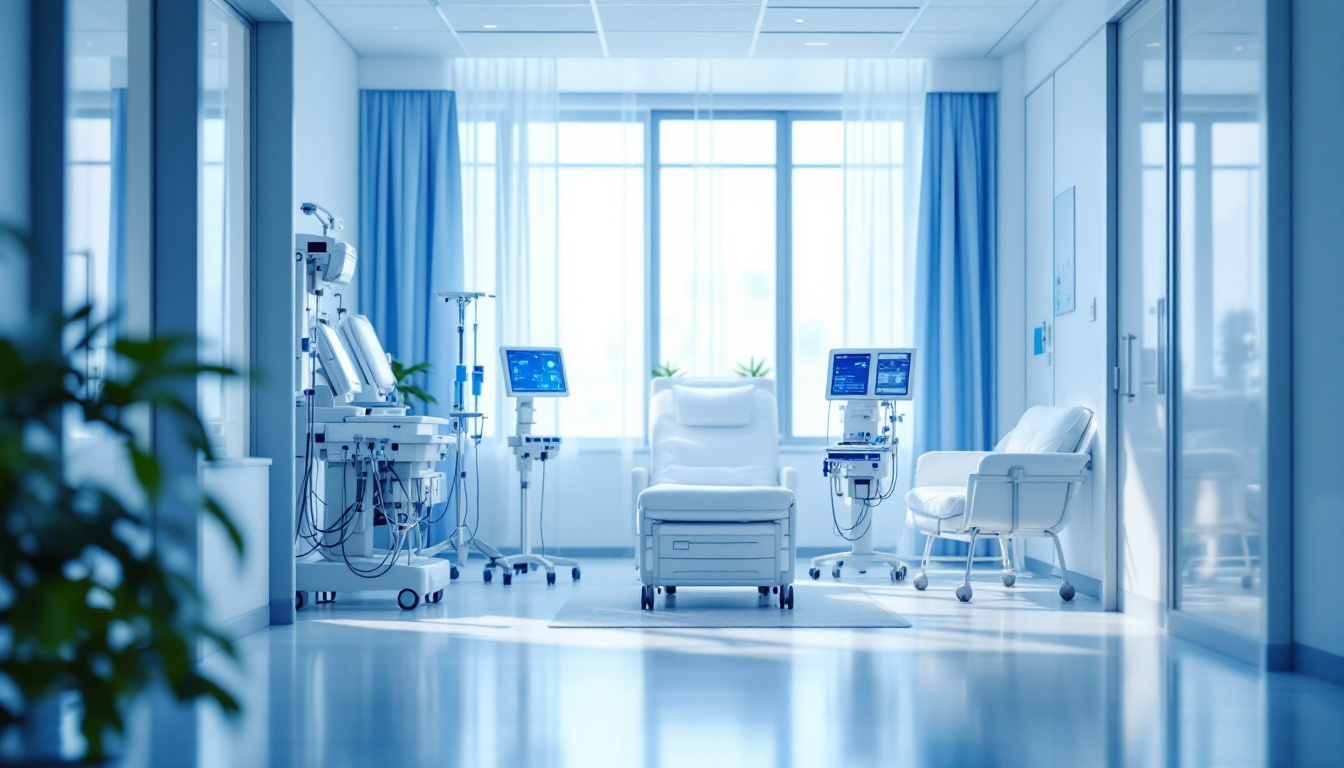What are the benefits of sterile solutions for therapy?

Introduction to Sterile Solutions in Healthcare
Sterile solutions are a cornerstone of modern medical therapy, offering myriad benefits in patient care across a variety of disciplines. From intravenous therapies to respiratory treatments, these solutions ensure the safe and effective delivery of medications, minimizing infection risks and enhancing therapeutic efficacy. This article delves into the advantages of sterile solutions, examining their applications, regulatory standards, and critical role in healthcare innovation.
Benefits and Applications of Sterile Solutions in Respiratory and IV Therapy

What are the applications and benefits of sterile solutions in intravenous (IV) and respiratory therapy?
Sterile solutions play a crucial role in both intravenous (IV) therapy and respiratory treatments. In IV therapy, they ensure the safe and effective delivery of fluids, medications, and nutrients directly into the bloodstream. This capability allows healthcare providers to achieve rapid therapeutic effects, which are particularly important when managing dehydration or administering essential medication.
Different types of sterile solutions can be utilized, including isotonic (e.g., normal saline), hypertonic, and hypotonic fluids. Each type serves a specific purpose, such as restoring fluid balance or correcting electrolyte levels, making these solutions essential for stabilizing patients with varying needs. Adherence to strict administration protocols is imperative to prevent complications such as infection or infiltration, emphasizing the critical role that trained medical personnel play.
Advantages in respiratory therapy
In the realm of respiratory therapy, sterile solutions are primarily used in nebulization procedures. They facilitate the direct delivery of medication to the lungs, providing quick and effective relief for patients with respiratory conditions such as asthma or COPD. The use of sterile saline is particularly favored because it is isotonic, reducing the risk of airway irritation or bronchospasm.
Furthermore, using sterile solutions helps maintain moist airways, which is beneficial for patients experiencing dryness or irritation in their respiratory tracts. Large volume nebulizers can extend treatment sessions comfortably without frequent refills, enhancing the effectiveness of the therapy while maximizing patient comfort.
In summary, sterile solutions are fundamental in both IV and respiratory therapies. They not only ensure patient safety and treatment efficacy but also significantly impact healthcare outcomes.
Essential Role of Sterile Techniques in Healthcare Safety

Why is sterile technique important in healthcare?
Sterile technique is vital in healthcare as it drastically lowers the microbial count, establishing a sterile field that helps prevent infections during surgical and invasive procedures. This technique isn’t limited to operating rooms; it is equally crucial in settings like Foley catheter insertions and line placements, where opportunities for pathogen introduction are significant.
Creating and maintaining a sterile field immediately before procedures minimizes contamination risks. Healthcare professionals must establish this sterile environment and ensure continuous monitoring throughout the procedure.
Proper hand hygiene practices, including surgical scrubs, are essential. Healthcare workers utilize sterile gowns, gloves, and equipment to maintain sterility. These tactics are fundamental in defending both patients and staff against infectious agents. Compliance with sterile techniques substantially boosts patient safety and improves outcomes.
How do sterile techniques reduce infection risks?
Sterile techniques actively decrease the likelihood of hospital-acquired infections (HAIs), which can complicate recovery and inflate healthcare costs. The preparation and maintenance of a sterile field not only limits microbial growth but also ensures a controlled environment beneficial for patient safety.
For effective application, strict aseptic protocols are followed. These include using sterile solutions and aseptic compounding methods that are particularly crucial when dealing with immunocompromised patients, such as those receiving chemotherapy. Furthermore, in sterile environments, such as clean rooms adhering to USP <797> standards, contamination risks can be significantly lowered, promoting safe and effective treatment options for patients.
| Aspect | Importance | Details |
|---|---|---|
| Sterile Technique | Infection Prevention | Essential for surgeries and invasive procedures. |
| Sterile Field | Reduces Microbial Count | Critical for patient safety and successful outcomes. |
| Compliance | Patient and Staff Safety | Adherence to protocols lowers risk of HAIs. |
Sterile Solutions' Impact on Chronic Disease and Infection Treatment
What roles do sterile solutions play in therapy for chronic diseases and infections?
Sterile solutions are essential across various therapeutic settings, particularly in managing chronic diseases and preventing infections. They ensure that medications and treatments are delivered in an environment free from harmful microorganisms, which is crucial in minimizing infection risks.
For patients with chronic conditions, such as asthma or COPD, the use of sterile saline in nebulization therapy helps maintain moisture in the airways. This not only enhances drug delivery but also alleviates symptoms by reducing irritation and potential bronchospasm. By minimizing bacteria exposure, sterile saline provides a safer method for lung treatments.
Furthermore, during invasive procedures like drug administration or surgical interventions, the integrity of sterile solutions plays a significant role in reducing healthcare-acquired infections. Utilizing aseptic techniques and maintaining a sterile field helps safeguard against complications that can arise from infections, thereby addressing one of the major challenges in chronic disease management.
How do sterile solutions contribute to enhanced patient safety?
The preparation and administration of compounded sterile products (CSPs) adhere to USP <797> standards, which emphasize environmental control to mitigate contamination risks. Adhering to these guidelines ensures that drugs are made in clean rooms, facilitating a safer therapeutic approach.
Moreover, sterile compounding allows for on-site customization of medications, which can be particularly beneficial in clinical settings like chemotherapy. There, the risk of infection is heightened due to patients’ compromised immune systems. Immediate access to sterile solutions helps reduce waiting times for treatments and enhances overall patient care.
In conclusion, sterile solutions are vital in providing safe, effective treatments, directly influencing outcomes for individuals managing chronic diseases and infection risks. Their roles in maintaining sterility during therapies reinforce the importance of rigorous standards in healthcare.
Sterile Processing: A Pinnacle of Medical Instrumentation Safety

What are the benefits of sterile processing?
Sterile processing provides numerous benefits that enhance both patient safety and healthcare outcomes. By meticulously cleaning, disinfecting, and sterilizing medical tools and equipment, it significantly reduces the risk of infections during surgeries and other procedures.
This meticulous attention to detail not only protects patients but also boosts the overall quality of care.
Moreover, the role of a Sterile Processing Technician is both accessible and in high demand. It requires no prior experience, making it an ideal entry point for individuals looking to enter the healthcare field. The job opportunities are widespread, spanning hospitals, clinics, and other medical facilities.
Career opportunities in sterile processing
Additionally, sterile processing allows for career advancement into specialized roles, providing professionals with growth potential. The work schedule is also flexible, accommodating those with busy lifestyles. The median salary for this position is around $45,280, and the job market is expected to grow positively, highlighting the impact of sterile processing on improving patient care quality.
Insights into Sterile Compounding Standards and Their Significance

How do sterile compounding processes and regulatory guidelines impact healthcare?
Sterile compounding processes and regulatory guidelines are fundamental to ensuring patient safety in medical settings. The United States Pharmacopeia (USP) <797> standards outline essential practices for compounded sterile preparations (CSPs), which must be free from contaminants that can pose health risks. Healthcare professionals, particularly pharmacists and technicians, must adhere meticulously to these guidelines to reduce the prevalence of errors and contamination.
Compliance with USP <797> not only mitigates the risks associated with compounded medications but also significantly impacts patient outcomes. By establishing clear and enforceable standards, these guidelines help protect patients from potential harm, ensuring the medications they receive are safe and effective. Facilities that maintain high-quality standards gain trust, bolstering both patient and healthcare provider confidence in treatment efficacy.
The importance of regulatory oversight is further highlighted by the variability in quality among different compounding facilities. Rigorous adherence to established practices promotes the integrity of healthcare delivery, particularly vital when medications need to be tailored to individual needs. In essence, the diligent application of sterile compounding standards like USP <797> enhances patient safety and health outcomes, fostering a safer therapeutic environment.
| Topic | Key Point | Significance in Healthcare |
|---|---|---|
| USP <797> Guidelines | Standardizes sterile compounding practices | Ensures safety and effectiveness of compounded medications |
| Regulatory Impact | Prevents contamination and errors in medication preparation | Protects patient health and enhances treatment integrity |
| Healthcare Delivery | Enables tailored medication solutions for patients | Boosts confidence in safety and therapeutic outcomes |
This table summarizes the crucial aspects and contributions of sterile compounding standards to healthcare quality.
Advantages of Sterile Injectables: A Patient's Perspective

What are the advantages of using sterile injectables in healthcare?
Sterile injectables offer significant benefits in healthcare, primarily due to their ability to provide precise dosing and rapid absorption. Unlike oral medications, which can lose efficacy during digestion, sterile injectables ensure 100% bioavailability. This feature is especially important for critical conditions where immediate therapeutic effects are required.
The market for sterile injectables is expected to reach impressive figures by 2028, driven by innovations such as prefilled syringes. These advancements not only improve patient safety by reducing the risk of contamination during administration but also enhance convenience for patients, making it easier for them to manage their treatments.
Aseptic manufacturing processes for sterile injectables are tightly regulated, minimizing contamination risks. This is crucial, as these medications are directly administered into the bloodstream or tissues, and any contamination could lead to serious health complications.
Additionally, long-acting injectables (LAIs) contribute to improved patient adherence. By decreasing the frequency of injections, LAIs allow for sustained medication release, which is vital for chronic disease management. Their targeted delivery enhances therapeutic outcomes without the burden of daily medication regimens.
Overall, sterile injectables are integral to effective treatment across a variety of medical conditions, comprising about 95% of their usage for therapeutic purposes beyond immunizations.
Sterile Solutions and Connectors in Cutting-Edge Gene and Cell Therapies
How does the use of sterile solutions and connectors aid in gene and cell therapy manufacturing?
The role of sterile solutions and connectors in gene and cell therapy manufacturing is paramount. Sterile solutions ensure that therapeutic products remain uncontaminated, significantly enhancing the safety and quality during production. The application of Single-Use Technologies (SUTs) streamlines the manufacturing processes, enabling cost reduction while maintaining high standards of sterility—particularly crucial when dealing with patient-derived cells.
Aseptic connectors, like the MicroCNX® Nano Series, facilitate secure, reliable connections. Their design is aimed at eliminating the cumbersome techniques often associated with traditional methods. This reduction in complexity not only minimizes contamination risks but also reduces the likelihood of operator error.
Additionally, these connectors support multiple small-volume transfers that are critical in autologous therapies, where unique patient cells are utilized. Such innovations enhance patient safety and allow for improved manufacturing efficiency. This means that processes can be scaled more effectively, and resources can be better managed without compromising on the quality of the therapeutic products.
Why are sterile solutions critical in therapies like chemotherapy?
In therapies such as chemotherapy, the use of sterile solutions is critical in preventing infections, particularly for immunocompromised patients. Sterile compounding ensures that medications are free from harmful microorganisms and particulates. Guidelines like USP <797> emphasize the importance of maintaining a controlled environment for compounding, which is vital to safeguard patient health during such high-risk treatments.
By employing sterile techniques in the administration of these therapies, healthcare providers can significantly minimize the risk of hospital-acquired infections (HAIs), thereby improving patient recovery rates and reducing overall healthcare costs. Maintaining sterility in these treatments is essential not only for immediate patient safety but also for long-term health outcomes.
Conclusion: The Undeniable Necessity of Sterile Solutions in Therapy
Sterile solutions represent a fundamental component in modern healthcare, pivotal for ensuring the safety, efficacy, and success of therapeutic interventions across various domains. Whether in emergency IV treatments, chronic disease management, or cutting-edge gene therapies, their role in maintaining sterility can not be understated. As medical technologies continue to advance, the adherence to sterile processes and standards will remain indispensable in enhancing patient outcomes, minimizing infection risks, and supporting the ongoing evolution of medical therapies.
References
- Sterile Solutions for Nebulization Therapy - Ontosight.ai
- The Benefits of On-Site Sterile Compounding in a USP Clean Room
- Sterile injectables: What they are and how they're manufactured
- Sterile Technique - StatPearls - NCBI Bookshelf
- Aseptic Technique: Uses, Benefits, and Complications - Healthline
- Sterile Compounding - Meta Pharmacy Services
- Saline Solution: What It Is, Types & Uses
- Single-Use Sterile Connectors for Cell Therapy - CPC
- Erectile Dysfunction Sterile Injectable Therapy
- IV Fluids: Types, Ingredients, Uses & Benefits - AZ IV Medics



































































































